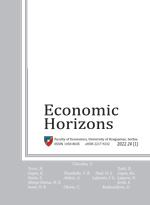MARKOWITZ PORTFOLIO REBALANCING WITH TURNOVER MONITORING
Mikica Drenovak, Vladimir Rankovic
Faculty of Economics, University of Kragujevac, Kragujevac, Serbia
Active portfolio management implies periodic rebalancing, i.e. a change in the structure of the existing portfolio. Rebalancing is aimed at improving the performance of the managed portfolio by adjusting it with respect to the given objective. The main objective of this research is to test two portfolio rebalancing strategies, one based on market risk and another on optimal risk-return tradeoff. We use optimal volatility or Sharpe of portfolio as a criterion for the initial portfolio allocation and rebalancing over the observed period. In order to obtain solutions that can be applied in practice, we impose rebalance triggers designed to control the portfolio turnover and corresponding transaction costs. the results suggest that the minimum volatility strategy can be accepted as an eligible investment alternative for risk adverse investors since it provides superior risk performance compared to the reference S&P 100 index and 1/n portfolio, with a relatively low level of turnover and a low rebalance frequency.
Keywords: portfolio management, volatility, Sharpe ratio, portfolio rebalancing, turnover
JEL Classification: C44, C61, G11
Economic Horizons, 2014, Vol. 16, No. 3, pp. 207-217; Published online 22 December 2014; doi:10.5937/ekonhor1403211D




